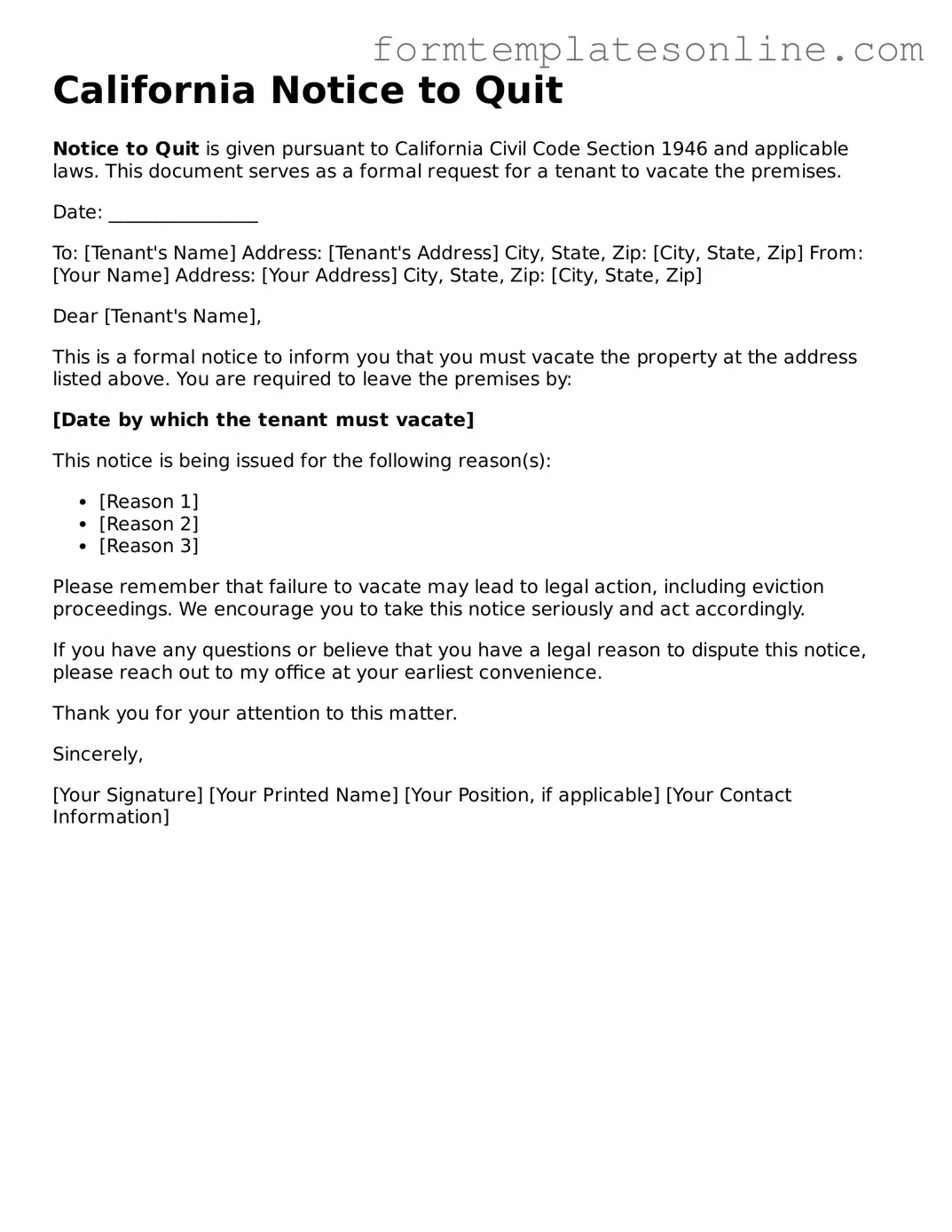What is a California Notice to Quit?
A California Notice to Quit is a legal document that a landlord uses to notify a tenant to vacate the rental property. This notice is typically issued when a tenant has violated the terms of their lease or rental agreement, such as failing to pay rent or engaging in illegal activities on the premises.
When should a landlord use a Notice to Quit?
A landlord should issue a Notice to Quit when a tenant has breached the lease agreement. Common reasons include non-payment of rent, lease violations, or illegal activity. The notice serves as the first step in the eviction process, allowing the tenant a specific timeframe to remedy the situation or vacate the property.
How much notice must be given in a Notice to Quit?
The amount of notice required depends on the reason for the eviction. For non-payment of rent, a 3-day notice is typical. For lease violations, a 30-day or 60-day notice may be required, depending on the length of the tenancy and the specific violation. It’s essential to follow the appropriate guidelines to ensure the notice is valid.
Can a tenant contest a Notice to Quit?
Yes, a tenant can contest a Notice to Quit. If they believe the notice is unjust or incorrect, they can respond to the landlord, often seeking to negotiate or clarify the issues. If the matter escalates, the tenant may also choose to defend themselves in court if an eviction lawsuit is filed.
What happens if a tenant does not comply with the Notice to Quit?
If a tenant does not comply with the Notice to Quit by vacating the property within the specified timeframe, the landlord can file an unlawful detainer action in court. This legal process seeks to obtain a judgment for eviction, allowing law enforcement to remove the tenant if necessary.
Is a Notice to Quit the same as an eviction notice?
No, a Notice to Quit is not the same as an eviction notice. The Notice to Quit is a preliminary step that gives the tenant a chance to remedy the situation or vacate. An eviction notice typically follows if the tenant does not comply with the Notice to Quit and the landlord pursues legal action.
Do landlords need to provide a reason for the Notice to Quit?
Yes, landlords must provide a reason for issuing a Notice to Quit. This reason should be clearly stated in the notice, whether it’s due to non-payment of rent, lease violations, or other grounds for eviction. Transparency helps ensure the notice is legally valid.
Can a Notice to Quit be delivered electronically?
In California, a Notice to Quit must be delivered in person, posted on the property, or sent via certified mail. Electronic delivery is generally not acceptable for this type of notice, as it must comply with specific legal requirements for service.
What should a landlord include in a Notice to Quit?
A Notice to Quit should include the tenant's name, the address of the rental property, the reason for the notice, the date of issuance, and the timeframe the tenant has to comply. It's also important to include the landlord's contact information for any questions or clarifications.
Are there any specific forms required for a Notice to Quit in California?
While there is no official state form for a Notice to Quit, landlords should ensure that the notice meets all legal requirements and clearly outlines the necessary information. Many landlords choose to use templates that comply with California law to ensure accuracy and validity.
